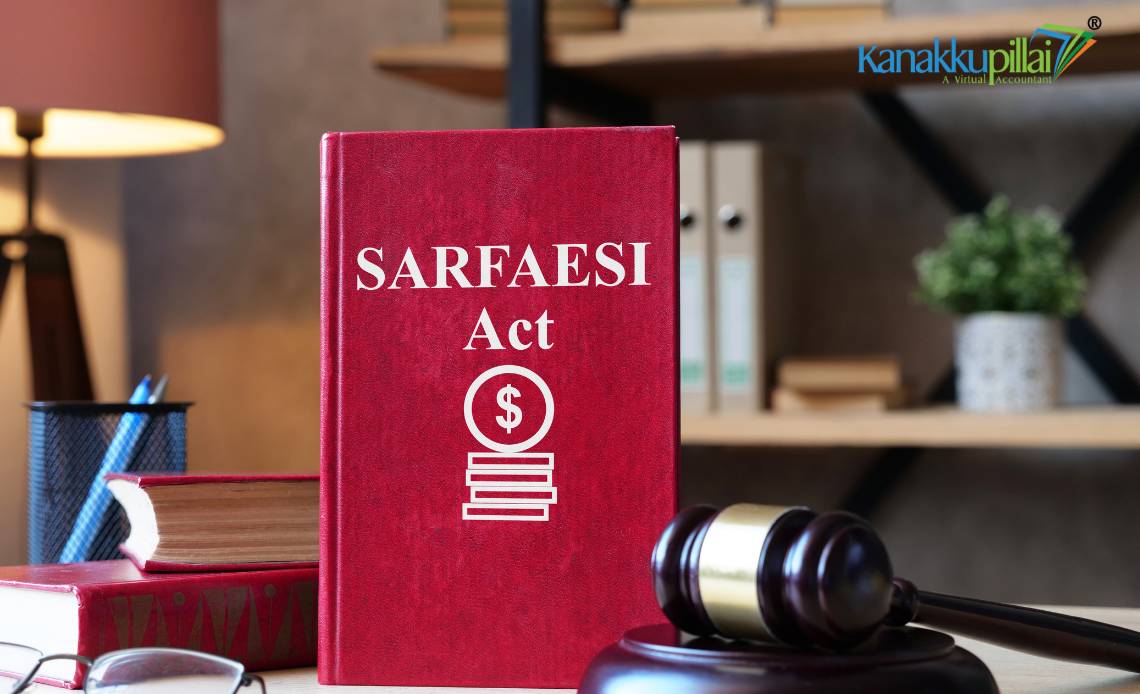The Securitisation and Reconstruction of Financial Assets and Enforcement of Security Interest (SARFAESI) Act, 2002, was brought into effect with the objective of giving power to banks and financial institutions to effectively recover non-performing assets (NPAs) without going to courts. The Act provides statutory provisions for enforcing security interests, allowing lenders to attach and sell the property of defaulting borrowers.
This blog explores the SARFAESI Act’s objectives, key provisions, impact, and legal framework in India.
Introduction
The Indian financial system has persisted in dealing with perpetual non-performing assets (NPAs), which jeopardize the stability of the financial sector. Prior to the SARFAESI Act, financial institutions would have to go through long drawn legal proceedings to recover their bad loans, which led to delays and also loss of revenue.
Launched in 2002, the SARFAESI Act provides banks with a mechanism for recovering debts in an effective way by allowing them to take possession of secured assets without the intervention of courts. The act plays a crucial role in making the financial system strong and ensuring timely recovery of loans.
Objectives of the SARFAESI Act
- Recovery of NPAs – The SARFAESI Act, the primary objective of which is to empower banks and financial institutions to recover secured loans from defaulter borrowers, vests authority in lenders to realize their interest in security in the absence of intervention by courts, thereby hastening the process of recovery.
- Reduction of Litigation – Prior to the enactment of the Act, banks needed to depend upon lengthy, expensive legal proceedings in order to recover dues. SARFAESI lightens the load on the judiciary by permitting lenders to take immediate possession and sell secured assets, thus reducing unnecessary litigation.
- Facilitating Asset Reconstruction – The Act enables the creation of Asset Reconstruction Companies (ARCs) that are expert in taking over and handling bad loans. ARCs enable banks to clear their balance sheets and concentrate on core business while the ARCs try to recover value from troubled assets.
- Financial Sector Consolidation – By enabling timely recovery of bad debts, the SARFAESI Act strengthens the banking system. It promotes the financial discipline among borrowers, improves credit risk management, and raises overall confidence within the finacial system.
- Promoting Credit Growth – The effective loan recovery processes ensure that financial institutions are more liquid and have fewer non-performing assets. This allows them to provide more credit to individuals and businesses, which goes on to drive economic growth.
Key Provisions of the SARFAESI Act
-
Applicability of the Act
The Act is applicable to banks, financial institutions, and asset reconstruction companies registered under the Reserve Bank of India (RBI) guidelines. It is not applicable to
- Loans less than Rs 1 lakh.
- Agricultural land.
- Loans with outstanding amounts less than 20% of the principal and interest.
-
Enforcement of Security Interest
Under Section 13, security interests can be enforced outside of court proceedings in case a borrower defaults. These are –
- Taking possession of the asset that is secured.
- Leasing or selling the asset to recover dues.
- Appointing a manager to manage the secured asset.
-
Asset Reconstruction
This Act also makes provisions for the setting up of Asset Reconstruction Companies (ARCs), that buy NPAs from banks and restructure them for the better recovery. The ARCs have to be registered with the RBI and follow some guidelines as prescribed by the Act.
-
Securitisation of Financial Assets
The Banks can convert loans into marketable securities and sell them to investors, increasing liquidity and risk dispersal.
-
Role of the Debt Recovery Tribunal (DRT)
If the borrower is objecting to the seizure of assets, he or she can appeal before the Debt Recovery Tribunal (DRT) within 45 days. If not content, he or she can further appeal before the Debt Recovery Appellate Tribunal (DRAT).
-
Penalties for Non-Compliance
Section 29 says that whoever obstructs recovery under the SARFAESI Act will be punished with penalties, imprisonment, or both.
Impact of the SARFAESI Act
The SARFAESI Act has greatly enhanced the recovery rate of NPAs. Some of its major impacts are as follows.
- Faster Debt Recovery – The Banks are now able to recover more bad loans without lengthy legal delays.
- Decline in NPA Levels – This Act discourages any such wilful defaults.
- Improved Investor Confidence – This act also enhanced financial stability that increases investment opportunities.
- Boost to Asset Reconstruction Industry – ARCs enable banks to offload NPAs, leading to better fund management.
Challenges and Criticism
Notwithstanding its success, the SARFAESI Act is also subject to several challenges-
- Judicial Interventions – Courts, at times, interfere with cases, causing delays in recovery.
- Lack of Implementation – Banks are reluctant to initiate harsh recovery processes.
- Borrower Harassment – Certain defaulters allege abuse of powers by banks.
- Exclusion of Small Borrowers – The SARFAESI Act has benefited mostly the bigger financial institutions.
Conclusion
The SARFAESI Act of 2002 is a landmark legislation in the Indian financial sector law, helping banks and financial institutions to recover loans efficiently. By facilitating lenders in enforcing security interests without resorting to court proceedings, it reduces NPAs and increases financial stability.
It has been a improvement in debt recovery system, but judicial delay problems and borrower complaints have to be addressed for even improved effectiveness. Regular monitoring and reforms will witness the SARFAESI Act remain an important vehicle for ensuring a healthy banking system in India.
Related Service
Bibliography
https://pib.gov.in/





